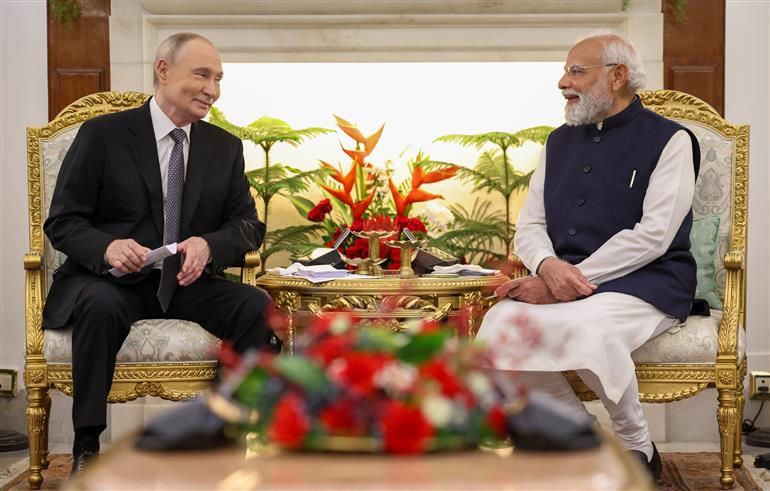China: PLA Rapid Pace of Military Modernization and India’s Deterrence
- Security Risks Research
- Apr 11, 2024
- 3 min read
Updated: Apr 15, 2024

The rapid modernization of the PLA is likely to create a gap which will weaken Indian conventional deterrence.
That the People’s Liberation Army [PLA] is rapidly modernizing is by now well established. On assumption of the post of Chairman of the Central Military Commission in 2013, Xi Jinping has set a scorching pace of modernization focusing on organizational restructuring as well as induction of state of the art platforms and weapons systems to project the PLA as a fourth generation plus force.
An evidence of this modenisation was in the Statement Of Admiral John C. Aquilino, U.S. Navy Commander, U.S. Indo-Pacific Command U.S. Indo-Pacific Command Posture 20 March 2024 to the US Congress House Armed Services Committee.
Admiral Aquilino who has for the past three years headed the largest joint command of the US Armed Forces is due to retire from service shortly.
In his presentation to the Committee Aquilino highlighted that China is advancing the military modernization programme, “to transform the PLA into an integrated, joint, high-tech, network-centric military force”.
The modernization is aggressive and is expected to achieve the objective of fielding a regionally competent and combat ready force by 2027, now just three years away. This supplements the goal of 2035, “basically complete national defense and military modernization by 2035” and possess a “world-class military by mid-century”
Admiral Aquilino highlights that the scale at which China is achieving this build up is the most intense seen since the Second World war and is occurring across all domains, land, sea, air, space, cyber, and information domains.
Defence Budget and Force Accretion

China’s official defense budget has risen over 16% from 192 billion USD to 223.5 billion USD. Admiral Aquilino says, “In the three years since I took command, the PLA has added over 400 fighter aircraft (almost all 4th and 5th generation variants), more than 20 major warships (guided missile cruisers, destroyers, frigates), and has more than doubled its inventory of ballistic and cruise missiles”.
Space and Nuclear Arsenal
China has increased the number of satellites launched by over 50% during this period, yielding a five-fold increase since 2020. Perhaps most concerning has been the rapid pace at which the PRC has bolstered its nuclear arsenal, increasing its warhead inventory by well over 100% since 2020 says the Admiral.
The continued development of supporting space and communications technologies is steadily increasing the lethality and precision of PLA systems.
Admiral Aquilino says, “In addition to the sharp increase in space launches over the past three years, the PRC is steadily delivering capabilities that seek to deny the use of our space architecture. Despite statements opposing the weaponization of space, the PRC is developing a range of counter-space capabilities and related technologies, including kinetic-kill missiles, ground-based lasers, and orbiting space robots”.
“Like other domains, the PLA's nuclear force has proliferated in the last three years. Upon taking command, the number of nuclear warheads was in the low 200s, and its nuclear triad was nascent, with the air component operationally fielded only in 2020. Now we see a PLA nuclear force with 500+ warheads, missile systems employing multiple independently targetable reentry vehicles (MIRV), three new ICBM silo fields, and a nuclear-capable, air-to-air refuelable bomber. Unfortunately, this is not the end of the PRC’s nuclear buildup; the PLA has plans for 1,000 warheads by 2030, accompanied by new air and sea-launch platforms,” the Admiral stated.
PLA Aviation
On the PLA aviation the Admiral highlights that it has undergone a significant transformation since 2021.
Combined, the PLA Air Force (PLAAF) and PLAN Aviation constitute the largest aviation force in the Indo Pacific.
Over half of the PLA's operational fighter force is 4th and 5th generation, enabling longer-range A2/AD and counter-air operations across the western Pacific Ocean. The PLA is also developing a stealth bomber that can cover the Second Island Chain and the Western Pacific.
Ballistic Missiles
The PLA's investment in modern, long-range weapons, almost certainly focused on countering third-party intervention, is underscored by the rapid expansion of its ballistic missile inventories and technologies.
He said, “During my tenure, the PLA increased its inventory of intermediate and medium-range ballistic missiles by over 60% while continuing to develop new longer-range capabilities, such as the DF-27 ballistic missile..”
Wither Indian Deterrence?

The rapid modernization of the PLA is likely to create a gap which will weaken Indian conventional deterrence even as Indian armed forces are struggling with issues such as jointness and creation of theater commands for the past four years.
Investments in the defence modernization remain sub optimal given the increase in costs of acquiring modern weapons while indigenization has led to delays in the process of acquisition.
How to eliminate the deterrence gap should be the core agenda for the government post the elections by adopting a structured all inclusive approach with demonstration of political will for instance to instruct the armed forces to create the theatre commands rather than vacillating in attempting to build consensus.



Ministry Church is one of the most committed church ministries that our senior pastor started in January 1975 after having a profoundly transformative experience with the Lord. In addition to serving as an evangelist for more than 45 years, he spent 30 years of his life serving in the United States Marine Corps before retiring. Driven by his enthusiasm for evangelization, he founded The Midnight Cry evangelistic ministry in 1977.